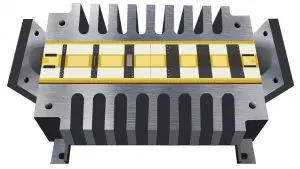Image Caption: A capacitor failure on a GPU board was caused from oil absorption through the capacitor’s rubber seats while emerged in white oil. As higher clock frequencies and smaller transistor dimensions continue to increase the power density of high-performance computing technologies, such as CPUs, GPUs, FPGAs, Laser Diodes, and Optical electronics, advances in thermal … [Read more...]
Join the Electronics Cooling Community of Authors and Bloggers!
Electronics Cooling invites you to share your expertise, knowledge, and perspective on critical aspects, foundational education, and trends with electronics thermal management technology. Electronics Cooling stands strong as one of the foremost resources for thermal management engineers and professionals, and much of this success is the result of a dedicated community of … [Read more...]
Estimating Internal Air Cooling Temperature Reduction in a Closed Box Utilizing Thermoelectrically Enhanced Heat Rejection
An earlier article in this column considered the problem of cooling electronic components in a closed box [1]. In outdoor applications for example, it may be necessary to totally seal the box to prevent exposure to airborne particulates, water droplets or other sub- stances in the air that could be injurious to the electronic components. In such an application, heat picked up … [Read more...]
Thermal Management Considerations in High Power Coaxial Attenuators and Terminations
The testing and troubleshooting of high power and high frequency systems such as distributed antenna systems (DAS), base stations, and various radar applications require buffering to prevent a power overload to the testing equipment and sensitive subsystem internal circuitry. With powers as high as 60 dBm (1000 Watts), radio frequency (RF) terminations and attenuators are … [Read more...]
What a Thermoelectric Cooler is REALLY Good For…
Fairy tales… perpetual motion machines… Not all fairy tales are perpetual motion machines, but all perpetual motion machines are certainly fairy tales. Before I get into the specifics of thermoelectric coolers, however, it seems appropriate to set the stage for this particular category of fairy tales. There are two classical types of perpetual motion “machines,” called (not … [Read more...]
- « Previous Page
- 1
- …
- 22
- 23
- 24
- 25
- 26
- …
- 32
- Next Page »










